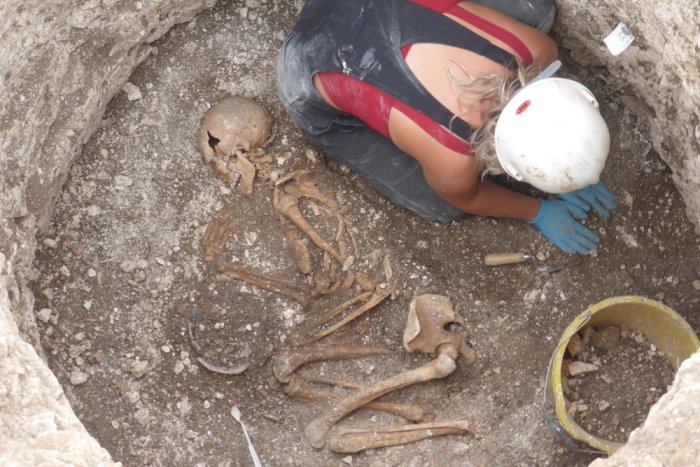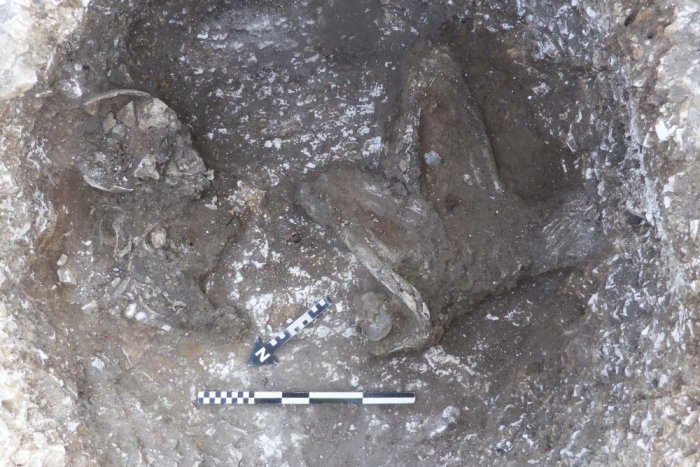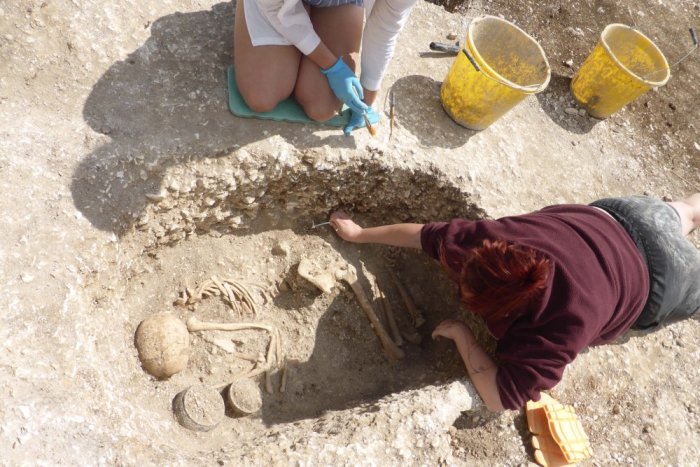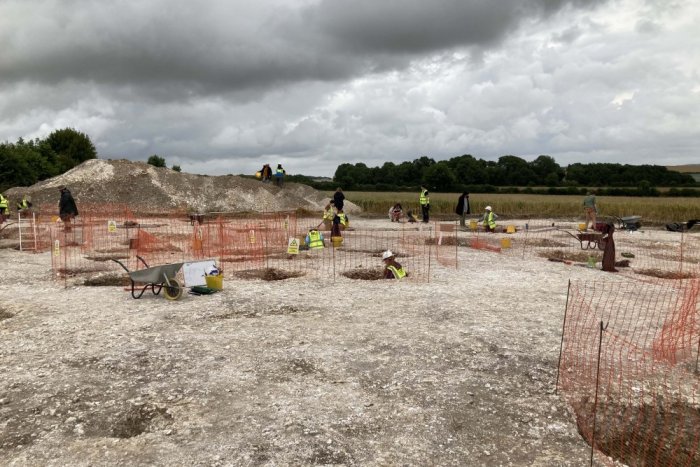Jan Bartek – AncientPages.com – Archaeology students from Bournemouth University have discovered a Bronze Age burial site during an excavation of a prehistoric settlement in Dorset.
It is the first time Bronze Age bones have been discovered on the site in Winterborne Kingston, where the university’s Department of Archaeology and Anthropology has been excavating settlements from the Iron Age for nearly fifteen years.

Credit: Bournemouth University
The settlements, which were inhabited by the Durotriges tribe, date back to around 100 BC, whereas the Bronze Age began around 2000 years before.
“This year we have found an adult male in a very тιԍнтly packed grave alongside lots of collared urns which is very distinctive of the end of the Neolithic period and the beginning of the Early Bronze Age, so it’s about 4000 years old,” said Dr Miles Russell, Senior Lecturer in Archaeology and Head of Fieldwork at Bournemouth University.

Credit: Bournemouth University
“So this is giving us the idea that people have been living here for a significant period of time. It’s not just the period just before the Romans arrived, they were farming this landscape, growing crops, and burying their ᴅᴇᴀᴅ at least four millennia ago,” he added.
The man was found in a crouched position which is consistent with Bronze Age practices where people were mummified after they died and kept above ground for a period of time before being buried in shallow pits.
During the past five weeks, the team of 110 students, staff and volunteers from Bournemouth University have also uncovered the buried remains of five people from the Iron Age, as well as bones from animals including cattle, horse, piglets, and goats in ancient storage pits on the site.
Dr. Russell believes the combination of animal parts found in some pits could have served as offerings to the community’s gods and goddesses in return for fertility and successful crops.
As well as the skeletons, the team have also uncovered a variety of everyday items used by the Durotriges tribe two thousand years ago, such as ceramic pots, jewellery, and a workers’ tools – including weaving combs made from deer antler.

Credit: Bournemouth University

Credit: Bournemouth University
The discoveries are providing new insights into the lifestyle of our ancestors and helping to re-write British prehistory.
“We don’t know an awful lot about what life was like before the Romans arrived. But at this site in Dorset, we’ve not only got a large farming settlement, we’ve also got human burials which is really important from an archaeological perspective,” Dr. Russell explained in a press statement.
See also: More Archaeology News
The excavation has now finished for another year but Dr. Russell and the university’s Department of Archaeology and Anthropology have carried out surveys of the nearby areas and are planning their return to Winterborne Kingston next year.
Written by Jan Bartek – AncientPages.com Staff





